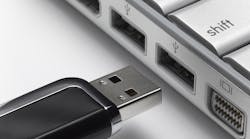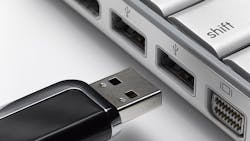USB flash drives have replaced floppy and 3.5-in. discs as an easy way to move and back up data (just ask Edward Snowden). But since they’ve been introduced, like any new technology, they have been accompanied by rumors and myths. Experts at Premium USB, a company that manufactures and designs USB drives, have taken the time to dispel some of the more prevalent myths.
Myth #1: The USB connectors on flash drive are fragile. Not even close. Connectors on USBs are made of metal and resists damage or bending. The rest of the USB drive, however, is not. So while it is possible to break or damage the connectors, it’s more likely you’ll damage the other components, many of which are made of plastic.
Myth #2: Magnets can damage or erase USB Drives. USB drives cannot be harmed or altered by magnetic fields. The drives are not built from magnetic materials. So magnets pose no danger to any flash memory including SSDs, SD cards, and external hard drives—even traditional hard drives are immune. In fact, hard drives use powerful magnets to move the head.
Myth #3: USBs are ruined when dunked in water. Only if they are powered up; simply putting a flash drive into water does not hurt it. But if one of your drives does get wet, put it in a jar of uncooked rice or silica gel for a day. Later, make sure it is dry, then plug it in. There’s a good chance it will still be working and will not have lost any data.
Myth #4: Unplugging a USB without “safely removing the hardware” damages the drive. Only if the drive is being accessed or used when it’s yanked out, which also can severely damage your computer.
Myth #5: When a USB breaks, the data is lost forever. Not necessarily, but it’s a good news/bad news situation. Unlike a CD or DVD, when a USB breaks, the data is not 100% lost. USBs have been blown up with explosives and the data has survived. Unfortunately, most of us lack the skill and equipment needed to get the data out of damaged drives. There are programs that will help retrieve deleted or missing data from a flash drive and professional computer forensics companies that specialize in data retrieval, but neither option is free.

